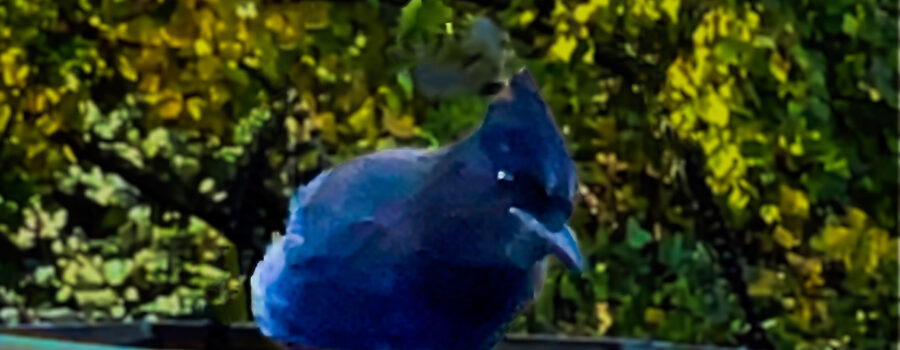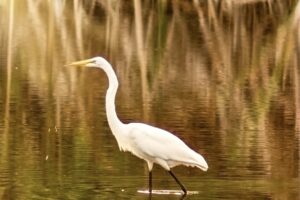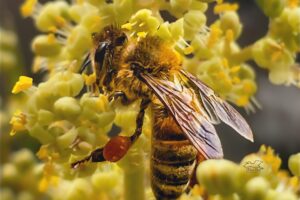The Beautiful Steller’s Jay has Colorful Plumage

One of the most interesting birds I got the opportunity to watch at my brother’s feeding station in Anchorage was the Stellar’s jay (Cyanocitta stelleri). It is also sometimes called the mountain jay, the pine jay, or the long-crested jay. It is closely related to the Eastern blue jay (Cyanocitta cristata) that we have here in the eastern United States. In fact, they are the only two birds in the genus Cyanocitta, and can interbreed in areas where their ranges overlap. Like the blue jay, the Steller’s jay is bold, can be aggressive, and can also be a clown. It didn’t show up to the feeder as often as some of the other birds, but when it did, everyone else gave it space. I have noticed the same thing happening here when a blue jay comes to the feeding station.

The Steller’s jay can be found in the forested, mountainous areas of much of the western United States and Canada. The southern coast of Alaska tends to be the northernmost extent of it’s range. It can also be found in the mountains of western Mexico and in a few spots in Central America. Over that large range, there are 16 subspecies and some of the subspecies show some definite differences in their plumage. For example, the northern subspecies tend to be darker in color than those in the south. Similarly, interior subspecies often have white markings on their faces and heads while coastal subspecies have fewer or no white markings. Crest size can also vary among the subspecies. The differences between subspecies can be complicated even more when they interbreed with the Eastern blue jay.

Like the Eastern blue jay, Stellar’s jay is an omnivore and will eat a large variety of foods including nuts, seeds, berries, fruits, insects, eggs, small mammals, and small reptiles and amphibians. They are very intelligent and often stash seeds and nuts that they will return for months later. As you can see from the photos, they also will frequent backyard feeders where they have a great fondness for sunflower seeds and peanuts. They will also feed on suet, especially in the winter months. I saw a lot of similarities between the two jay species, and I’m glad I got the chance to see and photograph the northern subspecies of the Steller’s jay. I’m hopeful that one day I’ll get the chance to see some of the other subspecies, too.






Recent Comments